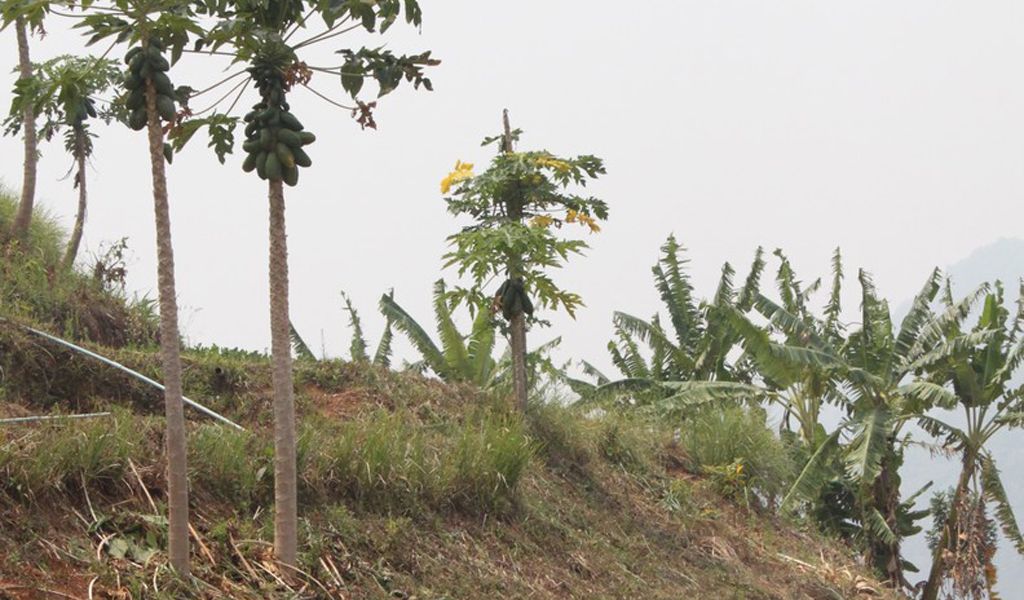Removing forest people not the solution to Thailand’s flood woes

A recent article in The Nation reports that “activists and experts” have called on the Thai government to “remove” as many as two million people from mountainous parts of the country in an effort to head off future natural disasters. The headline, however, distracts readers from the more nuanced message intended by these activist and expert groups.
“Govt called for moving 2m pp from mountain zones,” the headline reads; but this position was merely the “strongest” proposal put forward among more moderate options at a seminar titled “Headwater Forest Strategy and the Way to Prevent Flood and Drought,” held in Bangkok on 29 March.
It is indeed important to protect headwaters in the mountains, but relocating millions of people is not the answer. RECOFTC was a co-organizer of the seminar, which produced a draft national strategy for avoiding future natural disasters. As The Nation reports, the strategy included conserving headwater areas across the country; rehabilitating and restoring degraded headwater forests; building public awareness of the need for headwater-forest conservation; encouraging public participation in headwater-forest management; developing legal measures to protect headwater forests; and setting up an information center. Not mentioned, you’ll notice, is the large-scale removal of local people.
The proposal to remove 2 million people from the headwater areas is not only extreme, but also misguided in terms of flood prevention: the 2011 floods were primarily the result of heavy rainfall – more trees on the mountains would not have prevented runoff. The floods were damaging in large part due to human development of floodplains that disrupts the natural flow of water, making these developments more susceptible to floods.
Nevertheless, better protection of watersheds in the mountains can contribute to controlling the impacts of excessive rainfall. Agriculture, where it is legally allowed, needs to be intensified through careful terracing. Around this, agroforestry and mixed cropping can provide a buffer. The rest should be community forestry – managed for productive uses of sustainable timber and non-timber forest products. And finally, downstream users of water and water control should pay for the environmental services provided by upland forests. The people living in mountainous areas need government support to make these changes – and they should be rewarded if they maintain the ecosystem well.
“Certain mountain areas are more sensitive, like headwaters and natural springs,” said RECOFTC Senior Program Officer Ronnakorn Triraganon, in attendance at the March seminar. “Some very sensitive areas are not suitable for human activity, and we should work with local people to shift activities to less sensitive areas. Local people need to help to protect headwater areas and at the same time they must get sufficient benefits to maintain the areas for effective watershed function. There is no place to move them to.”
These ideas are not so new, and have already proved to be effective in Thailand, but do require sustained investment – a powerful case in point is the Doi Tung Development Project. The government is correct in pursuing alternatives to keep the people where they are and find ways to improve their livelihoods while they conserve the forest.
At the same time, the government has embarked on a THB 3 billion forest restoration initiative, again in part as a response to the floods. This is a massive investment and undertaking by Thai standards. However, the government has not clearly laid out how local people will be involved or their rights protected, and experience in many countries has demonstrated that better conservation outcomes arise when local people are involved. Thailand already has excellent experiences of community forestry, with over 10,000 community forests in the country, and this should form the basis for the forest rehabilitation program. The program could be significantly strengthened by passing a community forestry bill that ensures the rights of local people to the forests so that they can benefit from the products and services from the forests and are thus incentivized to conserve them.
It has been seen time after time that when local people are involved and can reap some of the benefits, such programs can be effective. When local people are not involved, the effectiveness can be compromised and huge sums of money can be wasted very quickly.

